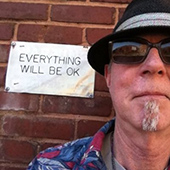The sheriff is Susan Burton, the new STC Director who opened the conference by reporting on some significant changes that have happened this year:
- the redefinition of the technical communication profession—This new definition for use in the Standard Occupational Classification system could have significant impact on how the profession compares with others and, accordingly, in setting appropriate salary expectations.
- the addition of key staff members to support critical society services
- the upgrading of society business infrastructures
- a complete revision of the society bylaws
The leading member of the posse, Paula Berger―STC’s president―explained the innovations that this conference offered in response to suggestions from the membership:
- five certification paths:
- TechComm 101—Basic Technical Communications
- Master Writers—Undiscovered Country: Taking Your Information Design to the Next Level

- Usability—The Science and Art of Effective Interface Design

- Content Management—Moving to Content Management: From Justification to Implementation

- Team Management—Managing Culturally Diverse Teams and Successfully Managing Geographically Dispersed Teams

- five special conferences-within-a-conference that focused on specialized, advanced topics:
- Publishing Systems and Content Management Institute
- Globalization, Localization and Translation Institute
- Sharing Corporate Knowledge Institute—See all of the presentations, background articles, and forums for this institute at its community of practice demo site.

- Information Design and Architecture Institute
- Web 2.0 Institute
- three pre-conference workshops:
- Developing Successful e-Learning Courses
- Developing for XML/DITA: FrameMaker, XMetal, and Related Tools
- Away With Words: Designing Wordless Instructions for International Audiences
All of these offerings were in addition to the member papers and presentations that traditionally form the mainstay of the conference. According to the Program Committee Manager, Phylise Banner Klein, only 20% of the proposals submitted this year were accepted—a clear indication of this year’s program committee’s commitment to quality. Demise, indeed!
